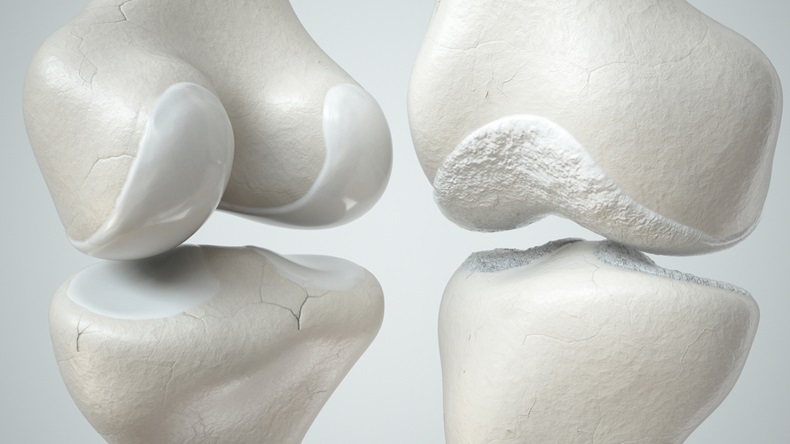Osteoarthritis
Osteoarthritis is a type of arthritis that causes wearing away of the cartilage in between the joint. With the diminishing cartilage between the joints, the connecting bones start rubbing against each other causing pain, stiffness, swelling, and inability of joint movement and may also form bone spurs. Osteoarthritis can affect any joints, such as the knee, hip, shoulder, elbow, etc. Knee osteoarthritis can also be seen in young people and can be a result of hereditary, or an infection or injury of the knee.
To diagnose any symptoms of knee osteoarthritis, you must see an orthopedic specialist soon before the condition worsens.

Causes
- Obesity
- Aging
- Joint injury
- Muscle weakness
- Bone deformity
- Stress on knees, such as bending, squatting, kneeling, or climbing stairs
Symptoms
- Knee locking
- Pain
- Stiffness
- Swelling
- The inability of joint movement
- Clicking sounds while moving the knee joint
- Pain worsens after continuous rest
Diagnosis
- X-Rays
- MRI
- CT-scan
- Blood tests
Treatment
Non-surgical Treatments
Lifestyle changes: You should avoid activities that may worsen the pain like bending, squatting, playing sports, etc.
RICE Protocol: Take proper rest, apply ice packs, practice compression as suggested by your orthopedist, and keep your knee elevated to the height of your chest.
Physical therapy: As per the recommendations of your physiotherapist, you must do exercises to strengthen the knee muscles
Weight loss: If obesity is the reason for your knee osteoarthritis, it is essential to losing some weight for easing the symptoms.
Medication: Your orthopedist may also prescribe you some pain relief drugs to control the pain and swelling. However, it is a temporary solution.
Braces or cast: The doctor will provide you with cast or braces to wear around the knee joint. It allows the knee to stay in place, promoting faster healing.
Surgical Treatments
Arthroscopy: In this process, the surgeon uses a camera or arthroscope, and other surgical instruments and passes it through small incisions created in the affected bone to remove the damaged cartilage. They also clean the bone surface, clear loose particles, and repair other damaged soft tissues, if any. This process is suitable for young adults and patients below the age of 55.
Osteotomy: It is a bone alignment surgery that is recommended to patients who damage an entire area of the knee. In the process, the shape of the bone is changed to allow it to fit well with the other bones in forming the knee joint. Osteotomy is not a permanent solution, and you may need another surgery in the future.
Joint replacement surgery: Also called arthroplasty, it is a process that replaces the damaged bone fragments in the knee with artificial materials called a prosthesis. The artificial parts are mostly of plates and screws of metals or plastic. It is a suggested treatment option for older adults above the age of 50, and the ones suffering from severe osteoarthritis of the knee.
Do you have unbearable pain while bending or straightening your knee? Book an appointment for an accurate diagnosis of your condition.
Book your appointment today to get proper diagnosis and treatment for your shoulder fracture.
Book your appointment today to get proper diagnosis and treatment for your shoulder fracture.
Interventions
Important Links
Contact Us
Room No: 338, 3rd Floor
Yasodha Hospital
Somajiguda, Hyderabad.
+91 99499 99499
drtdrreddy@hotmail.com
